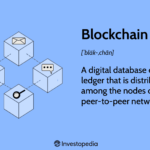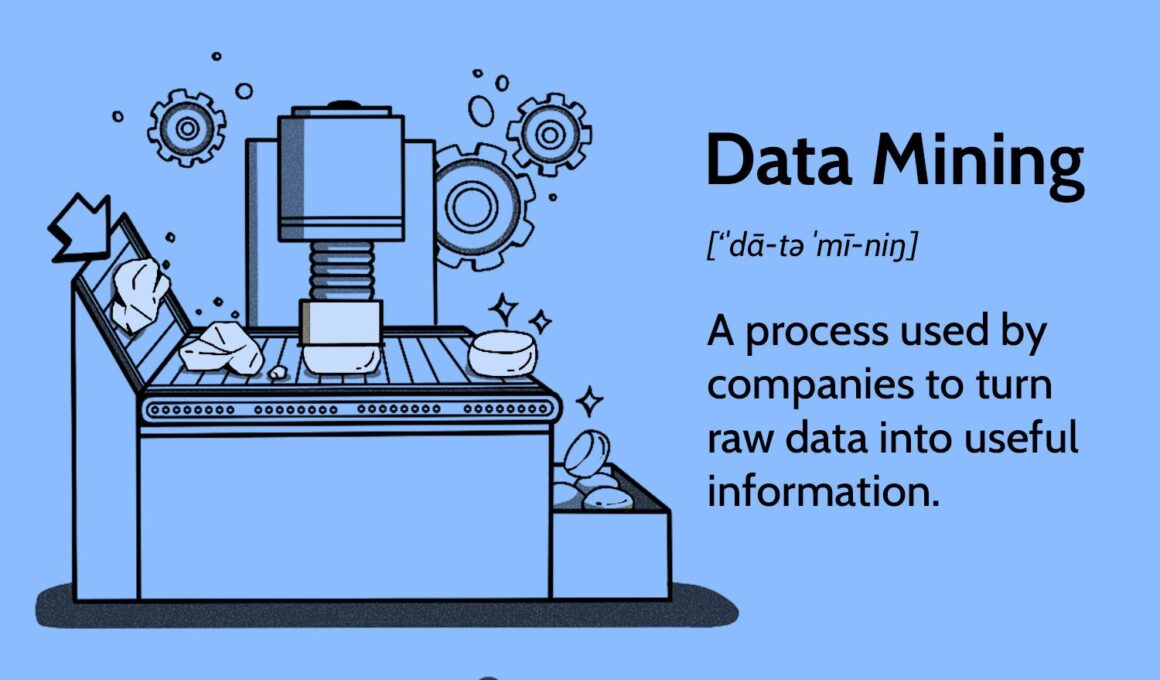Data mining is the process of extracting valuable information from large datasets. It involves analyzing data patterns to predict outcomes and inform decisions.
In today’s information-driven world, data mining stands as a cornerstone for various industries, enhancing their decision-making and strategic planning. Companies across finance, healthcare, marketing, and more utilize data mining to uncover hidden patterns, market trends, and customer preferences, thus gaining a competitive edge.
This technique employs sophisticated algorithms and advanced analytical methods to dissect huge volumes of data, transforming raw data into actionable insights. Data mining helps organizations in forecasting future trends and making data-driven decisions, leading to optimized operations and improved customer satisfaction. Effective data mining strategies can propel businesses forward, ensuring they stay ahead in the fast-paced digital landscape by leveraging the power of their data assets.

Credit: www.spiceworks.com
Introduction To Data Mining
Welcome to the threshold of understanding data mining, a vital process shaping modern businesses. Through this section, we’ll embark on a journey to demystify data mining. We’ll explore its definition, significance, evolutionary path in business, and its central objectives for enterprises.
Defining Data Mining And Its Importance
Data mining is the complex process of discovering patterns in large datasets. It involves methods from statistics, machine learning, and database systems. The importance of data mining spans several areas:
- Improved Decision Making: Businesses utilize insights from data mining for informed decisions.
- Risk Reduction: Identifying patterns helps mitigate risks.
- Customer Insights: Data mining reveals customer preferences and behaviors.
The Evolution Of Data Mining In Business
Data mining has witnessed a profound transformation over time, particularly in its business applications. Here’s a brief timeline:
- 1990s: Businesses begin using databases for information storage.
- 2000s: Advanced analytics take center stage.
- 2010s: Big Data and predictive analytics emerge.
- 2020s: Machine learning and AI integration becomes prevalent.
Key Objectives Of Data Mining In Modern Enterprises
Data mining objectives align closely with business aspirations. Key goals include:
| Objective | Description |
|---|---|
| Pattern Discovery | Uncover hidden patterns in data sets. |
| Predictive Analysis | Forecast future trends and behaviors. |
| Decision Support | Strengthen the decision-making process. |
| Enhanced Competitiveness | Gain an edge over competitors. |
Core Data Mining Techniques
Understanding data is key in making smart decisions. Data mining helps businesses find important information. Let’s explore top techniques used in this field.
Classification And Its Use Cases
Classification sorts data into categories. It helps in many areas:
- Email Filtering: It distinguishes spam from important emails.
- Credit Scoring: Banks use it to decide if they should give loans.
- Medical Diagnosis: Helps doctors find the right disease from symptoms.
Clustering For Pattern Discovery
Clustering groups similar data together. This finds hidden patterns. Companies use it to:
- Understand shopping habits.
- Find new customer groups.
- Organize large data sets easily.
Association Rules In Market Basket Analysis
Association rules show how items connect. They’re used in Market Basket Analysis to:
- Suggest products to customers.
- Arrange store layouts better.
- Plan effective sales promotions.
Decision Trees For Predictive Modelling
Decision Trees make prediction models. They help in:
- Choosing business strategies.
- Understanding customer decisions.
- Managing risks in investments.
Neural Networks For Advanced Pattern Recognition
Neural Networks mimic the human brain. They recognize complex patterns and are great for:
- Reading handwriting in documents.
- Finding fraud in transactions.
- Enhancing customer experiences.
Regression Analysis To Predict Continuous Outcomes
Regression Analysis forecasts numbers. Businesses use it to:
- Predict sales figures.
- Estimate product demand.
- Set prices for maximum profit.
Text Mining To Extract Business Value From Textual Data
Text Mining finds insights in text. Companies apply it to:
- Analyze customer feedback.
- Understand social media trends.
- Improve products and services.
Applications Of Data Mining Across Industries
Data mining taps into the hidden potential of data, greatly enhancing decision-making across diverse industries. By exploring patterns and trends within large data sets, it provides actionable insights for businesses. The following sections detail how various sectors harness the power of data mining to drive growth and accomplish their goals.
Improving Customer Relationship Management
Data mining elevates customer experiences by analyzing buying patterns and preferences. It leads to enhanced service offerings and customer retention strategies. Companies can tailor their approaches to meet client needs more efficiently.
Financial Data Analysis For Risk Assessment
Financial institutions rely on data mining to assess credit risks and detect fraudulent activities. By evaluating transaction history and customer profiles, banks predict loan defaults and prevent losses.
Healthcare Data Mining For Patient Care Optimization
In healthcare, data mining proves essential for improving treatment plans and patient outcomes. It helps in predicting disease outbreaks, personalizing patient care, and enhancing medical research.
Supply Chain Management Enhancements
Data mining streamlines the supply chain, optimizing inventory levels and predicting demand surges. Such insights support better resource allocation and reduce operational costs.
Marketing And Sales: Personalization And Targeting
By targeting the right audience with personalized campaigns, businesses increase sales. Data mining identifies the most effective marketing channels and customer segments, leading to improved conversion rates.
Fraud Detection And Security Improvements
Companies leverage data mining for enhanced security. It helps in detecting anomalies and predicting fraudulent transactions, bolstering overall security infrastructures.

Credit: www.linkedin.com
Challenges And Considerations In Data Mining
Data mining offers unlimited potential to uncover hidden patterns and predict future trends. But beneath the surface of these possibilities, significant challenges and considerations persist. To leverage data mining effectively, it is essential to understand and address these underlying issues.
Dealing With Data Quality And Inconsistencies
One major challenge in data mining is ensuring data quality. Inconsistent and poor-quality data can lead to inaccurate results, which could have serious repercussions for decision-making. Addressing these inconsistencies is a non-negotiable step in the data preparation phase.
- Cleaning data to remove errors and duplicate entries
- Normalizing data to maintain consistency across datasets
- Verifying data sources for reliability and accuracy
Ethical Concerns And Privacy Issues
With great power comes great responsibility. Ethical concerns and privacy issues are at the forefront of data mining. Personal data must be handled with care to respect an individual’s privacy and adhere to legal standards.
Considerations include:
- Securing informed consent from data subjects
- Ensuring anonymity through data anonymization techniques
- Compliance with regulations like GDPR and HIPAA
Complexity And The Need For Expertise
Data mining is a complex field requiring a high level of expertise. To extract meaningful insights from large data sets, specialized skills and advanced analytics tools are essential. Not all businesses have immediate access to these resources, creating a barrier to entry.
Integrating Data Mining With Existing Business Processes
Integrating data mining practices into existing business workflows can be challenging. Aligning objectives and ensuring the seamless transition of data insights into actionable strategies is crucial.
| Step | Action |
|---|---|
| 1 | Identify key business areas for data mining application |
| 2 | Develop a strategic plan aligning data mining with business goals |
| 3 | Train staff to interpret data mining outputs effectively |
The Future Of Data Mining In Business
Imagine a business world with endless possibilities due to data. This is what we expect as we look to the future of data mining in business. Data mining has become a cornerstone of modern business strategies. It helps companies to predict trends, understand customer behaviors, and make informed decisions.
Emerging Trends In Data Mining Techniques
As we propel into the future, data mining techniques continue to evolve. New tools and technologies emerge to gather insights more efficiently. Here’s what is trending:
- Automated data mining – With automation, businesses can sift through data faster.
- Visual data mining – This allows for more intuitive analysis through images and graphs.
- Text mining – Companies use this to understand customer feedback on a large scale.
- Mobile data mining – This taps into mobile device data for on-the-go insights.
Impact Of Big Data And Machine Learning
Big Data and Machine Learning are reshaping data mining.
Big Data offers a vast pool of information. Machine Learning algorithms learn from this data. Together, they provide powerful insights. Businesses can now:
- Predict customer behavior more accurately.
- Improve operational efficiency.
- Create more personalized marketing strategies.
Companies invest in these areas to stay competitive.
The Role Of Data Mining In Ai-driven Business Strategies
Artificial Intelligence (AI) drives modern business strategies. Data mining plays a key role. It helps AI systems learn from existing data. This leads to smarter business solutions. For example:
- Data mining identifies trends AI can use for decision-making.
- It can reveal patterns in customer behavior that AI can act upon.
- Data mining helps AI personalize user experiences in real time.
Businesses that leverage data mining in their AI strategies can significantly increase their competitive edge.

Credit: www.linkedin.com
Frequently Asked Questions Of Data Mining
What Do You Mean By Data Mining?
Data mining is the process of analyzing large data sets to discover patterns, trends, and relationships that inform decision-making and predictive analytics. It involves various statistical techniques and algorithms to extract actionable insights from data.
What Are The 3 Types Of Data Mining?
The three types of data mining are descriptive, predictive, and prescriptive analysis. Descriptive reveals patterns, predictive forecasts trends, and prescriptive suggests decisions.
What Is Data Mining And Why Is It Bad?
Data mining involves extracting patterns from large data sets. It can be problematic due to privacy invasion, data security breaches, and potential misuse of information.
What Is An Example Of Data Mining?
Data mining example: Retail chains analyze transaction data to identify buying patterns and optimize product placement.
Conclusion
Navigating data’s complex terrain requires skill and precision. Data mining stands as a beacon, guiding strategic insights and decisions. This blog has untangled key aspects vital for businesses embracing this powerful tool. Embrace data mining; unlock potential, drive growth, and edge past competitors.
Your data-rich journey awaits.






